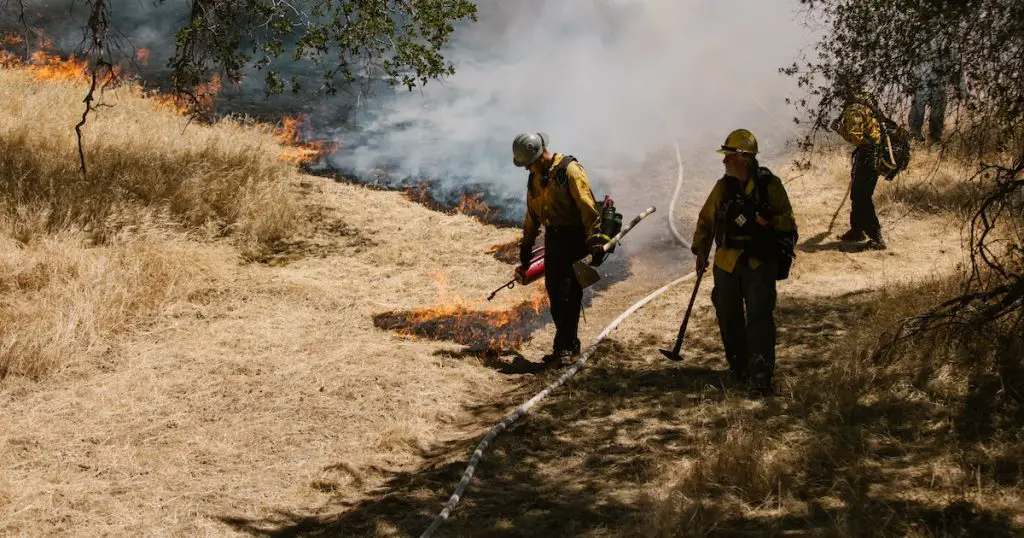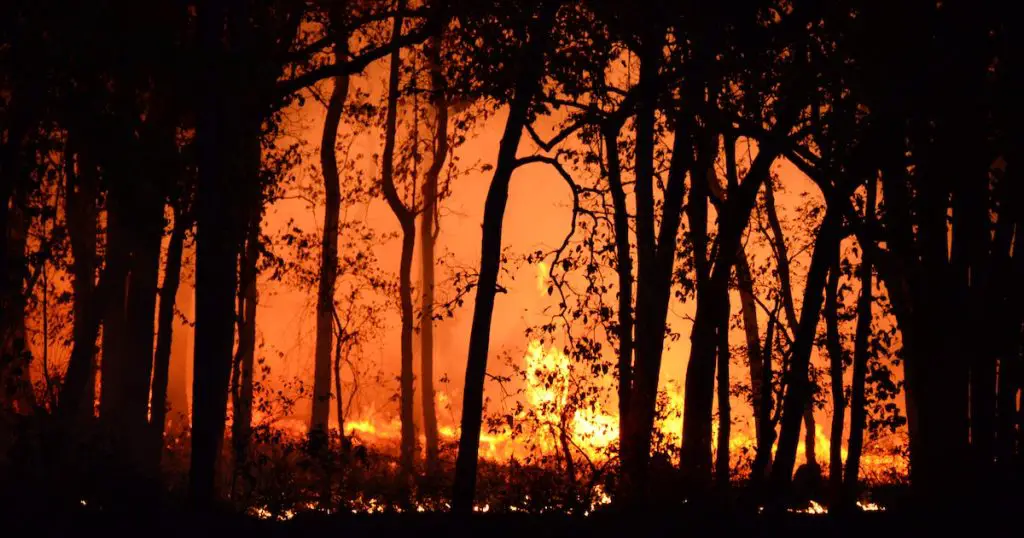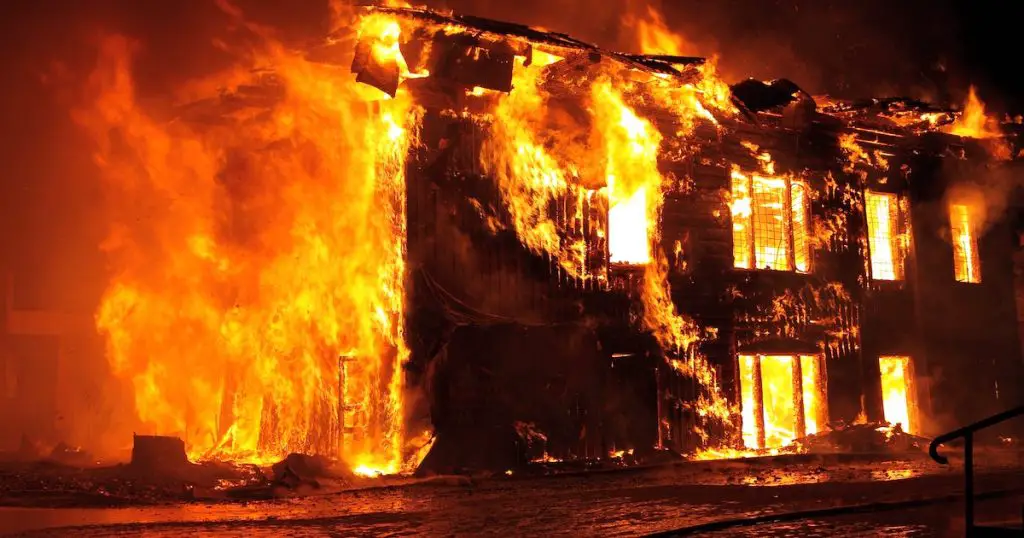Wildfires have long stood as a formidable force of nature, but in recent times, their ferocity seems to have intensified. The picturesque town of Prescott, renowned for its natural landmarks, has not been spared from this fiery wrath.
The impact of wildfires on natural landmarks in Prescott is a story that merits a closer look, not just for understanding the devastation caused but also for carving a path toward recovery and resilience.

Nestled amidst the scenic beauty of Arizona, Prescott stands as a testament to nature’s grandeur. With its rich tapestry of landmarks, from the stunning Granite Dells to the serene waters of Lynx Lake, Prescott draws nature enthusiasts from around the world. Yet, as with many treasures, these landmarks are vulnerable, particularly to the menace of wildfires.
Preserving our natural landmarks is not just about aesthetics or tourism; it’s about honoring our history, and our ecosystem, and ensuring that future generations inherit a world as beautiful as we did. But to safeguard this inheritance, understanding the threats they face is crucial.
Wildfires: A Brief Overview
Wildfires, often seen as nature’s fury unleashed, are uncontrolled fires that rapidly spread across vegetation areas. Fueled by dry conditions, winds, and flammable vegetation, they can consume large tracts of land, leaving destruction in their wake.
The causes of wildfires vary. Sometimes they are a result of natural phenomena like lightning strikes, but human activities, whether intentional or accidental, account for a significant portion. In fact, according to the National Park Service, as many as 85% of wildfires are caused by humans.
Historical Wildfires in Prescott
Prescott has witnessed its fair share of wildfires over the years. Each blaze has left an indelible mark on the community and its natural surroundings. The most significant ones are not just remembered for their size but also for the impact they had on the region’s ecology and its people.
Studying past wildfires offers insight into their frequency, causes, and repercussions. An analysis by The Arizona Central has previously highlighted that patterns of these wildfires show a disturbing upward trend, especially in the last two decades.
Effects on Prescott’s Flora and Fauna
The immediate aftermath of a wildfire is often stark and heartbreaking. The once-green landscapes turn to shades of black and ash-gray. Flora, especially native species, suffer immediate devastation, with some areas experiencing total burnout.
Yet, the impact on fauna can be even more distressing. Wildfires displace numerous species, causing immediate fatalities and threatening the survival of those who escape. Animals lose their homes, and sources of food, and often find it challenging to return.
In the long term, the recovery of vegetation can take years, depending on the severity of the burn and the region’s ecology. This protracted recovery period further affects the fauna, as many species depend on specific plants for sustenance and shelter.

Impact on Prescott’s Granite Dells
The Granite Dells, with their iconic rock formations and panoramic views, are among Prescott’s most cherished landmarks. However, wildfires have taken a toll on this natural wonder.
The intense heat from wildfires can lead to discoloration of the rocks. While this might seem superficial, it’s a clear sign of the intense heat these formations have withstood.
Moreover, the vegetation that once clung to these rocks and played a crucial role in maintaining soil stability faces decimation during wildfires. This leads to accelerated soil erosion, potentially altering the landmark’s very structure.
The Devastation of Thumb Butte
Thumb Butte’s unique silhouette against Prescott’s skyline has always been a source of local pride. Its historical significance and unique vegetation make it an essential landmark.
Wildfires have ravaged this region, affecting its unique vegetation. These plants, some of which are native only to this region, face an uphill battle for survival post-wildfires.
Additionally, the loss of vegetation has other cascading effects. It affects the microclimate of the region and potentially threatens the landmark’s long-term health.
Lynx Lake’s Vulnerability
Lynx Lake, with its tranquil waters surrounded by dense forests, is a haven for both residents and tourists. Yet, its very beauty makes it vulnerable to wildfires.
Before the onslaught of wildfires, the lake boasted a rich ecosystem. From diverse aquatic life to birds that frequented its shores, it was a vibrant hub of life.
Post-wildfires, the lake’s surroundings undergo significant transformation. Burnt trees no longer shade its waters, altering its temperature. Aquatic life, sensitive to even minor changes, faces challenges, impacts the overall health of the lake.
Watson Lake’s Changing Landscape
Watson Lake, another of Prescott’s gems, has not been immune to the effects of wildfires. Once a hotspot for recreational activities, the wildfires have cast a shadow over its scenic beauty.
The azure waters of the lake once mirrored the lush greenery that surrounded it. But the burnt remnants post-wildfires paint a different picture, one of loss and change.
Beyond aesthetics, the impact on recreational activities is palpable. Areas once teeming with campers, hikers, and nature enthusiasts now see a decline, affecting the local tourism industry.
Impact on Air Quality and Visibility
Wildfires don’t just ravage the land; they affect the air we breathe. The dense smoke and particulate matter released pose severe health risks. According to the Environmental Protection Agency, prolonged exposure to particulate matter from wildfire smoke can lead to respiratory and cardiovascular issues.

The once-clear skies of Prescott often turn hazy during wildfires, impacting visibility. This doesn’t just affect daily life but also mars the views at various scenic points, further dampening the spirit of the community and its visitors.
Economic Implications for Prescott
Beyond the environmental devastation, the economic implications of wildfires in Prescott are profound. The town, with its natural beauty, has always been a magnet for tourists.
However, the aftermath of wildfires often sees a sharp decline in tourism. Attractions lose their charm, and concerns about air quality deter potential visitors.
Moreover, the costs of restoration and rehabilitation are staggering. Local authorities and communities face the dual challenge of managing resources for both immediate relief and long-term recovery.
Role of Climate Change
It’s hard to discuss wildfires without mentioning climate change. As global temperatures rise, areas like Prescott face prolonged droughts and dry spells, creating ideal conditions for wildfires.
Evidence suggests that climate change is exacerbating wildfire frequency and intensity. A report by NASA’s Earth Observatory notes a correlation between global warming trends and increased wildfires.
The looming threat of climate change means that the landmarks of Prescott face challenges not just from present-day wildfires but potentially more devastating ones in the future.
Community Response and Initiatives
The indomitable spirit of the Prescott community shines through in times of adversity. Post-wildfires, local initiatives often spring into action, focused on prevention, recovery, and awareness.
One of the significant efforts has been the emphasis on wildfire prevention. Communities, in collaboration with local authorities, work on clearing potential fire fuels and ensuring safe practices.
Community Response and Initiatives
Rehabilitation of the affected landmarks is another area where the community’s resilience is evident. Volunteers, local businesses, and environmental organizations often collaborate on restoration projects. Whether it’s replanting native species in the Granite Dells or organizing clean-up drives around Lynx Lake, the community’s commitment to preserving its natural heritage is unwavering.
Furthermore, there’s a heightened focus on education and awareness. Schools, community centers, and local media often feature programs and articles emphasizing the importance of responsible behavior, especially during dry seasons. Resources from institutions like the National Fire Protection Association are frequently utilized to guide and inform these initiatives.
Strategies for Landmark Preservation
Proactive measures are crucial in the face of increasing wildfire threats. To safeguard Prescott’s landmarks, a multi-pronged strategy is essential.
- Proactive Fire Management: Controlled burns, a technique where small, contained fires are deliberately set to clear out dry vegetation, can reduce the risk of larger, uncontrolled wildfires.
- Infrastructure Resilience: Investing in fire-resistant infrastructure around landmarks can offer a line of defense. This includes using non-flammable materials for any structures or pathways and setting up buffer zones.
- Native Vegetation: Planting more fire-resistant native plants can act as a natural barrier. These plants, adapted to the local environment, often have properties that resist rapid burning.
- Community Vigilance: Encouraging locals and tourists to be vigilant and report any signs of uncontrolled fires or risky behaviors can act as an early warning system.

Post-wildfire restoration is equally crucial. Techniques like soil erosion control, reseeding with native plants, and aquatic ecosystem rehabilitation are vital for the landmarks’ long-term health.
Frequently Asked Questions: Impact of wildfires on natural landmarks in Prescott
Why are Prescott’s landmarks particularly susceptible to wildfires?
Prescott’s natural landmarks are in a region with a dry climate, making the vegetation prone to catching fire, especially during prolonged dry spells.
What can residents do to help prevent future wildfires?
Residents can practice safe behaviors, avoid burning during high-risk periods, clear dry vegetation from their properties, and participate in community awareness programs.
How can tourists support the affected landmarks?
Tourists can contribute by respecting local guidelines, avoiding risky behaviors, and participating in or donating to restoration initiatives. Supporting local businesses, especially post-wildfires, also helps the community recover.
Are there any initiatives to plant more fire-resistant vegetation around the landmarks?
Yes, both governmental agencies and environmental groups are working to reintroduce native, fire-resistant vegetation in and around Prescott’s landmarks.
How is the local government addressing the increased frequency of wildfires?
The local government is investing in preventive measures, enhancing firefighting resources, organizing community awareness programs, and collaborating with environmental experts for sustainable land management.
Conclusion
The impact of wildfires on the natural landmarks of Prescott is undeniably profound. These landmarks, which hold historical, ecological, and aesthetic significance, face threats that challenge their very existence.
Yet, amidst the tales of devastation, there’s a story of resilience, hope, and community spirit. With proactive measures, community involvement, and a commitment to preservation, there’s hope that the landmarks of Prescott will continue to enchant generations to come.



Leave a Comment
You must be logged in to post a comment.